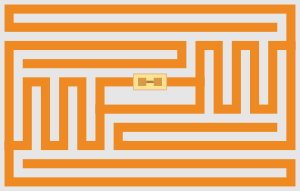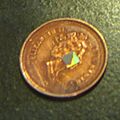Contactless smart card facts for kids
A contactless smart card is like a special card, usually the size of a credit card. It has a tiny computer chip inside. This chip can store information and talk to a card reader using radio waves. You don't even have to touch the card to the reader! These cards are super handy for quick payments or getting into places.
Some contactless smart cards are simple "memory cards." They just store data. Others have a more advanced chip that can be written on and read from using radio waves. Each card also has a unique number, like its own ID.
Contents
When Did Contactless Cards Start?
Contactless smart cards first appeared in 1996 in Seoul, South Korea. They were used there for electronic tickets on public transport.
Since then, these cards have become very popular. People use them for paying and for tickets, especially on buses, trains, and subways. Many cities around the world use them to make public transport faster and easier. Even though there are different types of these cards, the MIFARE Classic card is very common in places like the United States and Europe.
How Do Contactless Cards Work?
A contactless smart card talks to a card reader using a technology similar to RFID. RFID stands for Radio-Frequency Identification. It's like a secret radio conversation between the card and the reader. This conversation happens very quickly, allowing data to be sent fast.
Because they use radio waves, these cards don't need to touch the reader. You just need to hold them close. This is why they are great for busy places like transit stations. You can often use your card without even taking it out of your wallet!
What Makes a Contactless Smart Card Special?
Contactless smart cards have a few key features that make them useful:
- Size: They are usually the same size as a standard credit card. This size is defined by an international rule called ISO/IEC 7810. They are about 8.5 centimeters long, 5.4 centimeters wide, and less than a millimeter thick.
- Security: These cards have special security features to protect your information. They have tiny secure computer chips that make it hard for others to get your data. This helps keep your information safe and private.
- Connected Systems: The information on the card can be managed by central computer systems. These systems can update the card's data or even block a lost card.
- Easy Data Transfer: Information moves between the card and the central system using radio waves. This happens through devices like point-of-sale machines in stores, access control readers at doors, ticket readers, and ATMs. You can even use small readers connected to a computer.
Images for kids
-
Size comparison of chip compared to a Canadian penny
See also
 In Spanish: Tarjeta sin contacto para niños
In Spanish: Tarjeta sin contacto para niños




